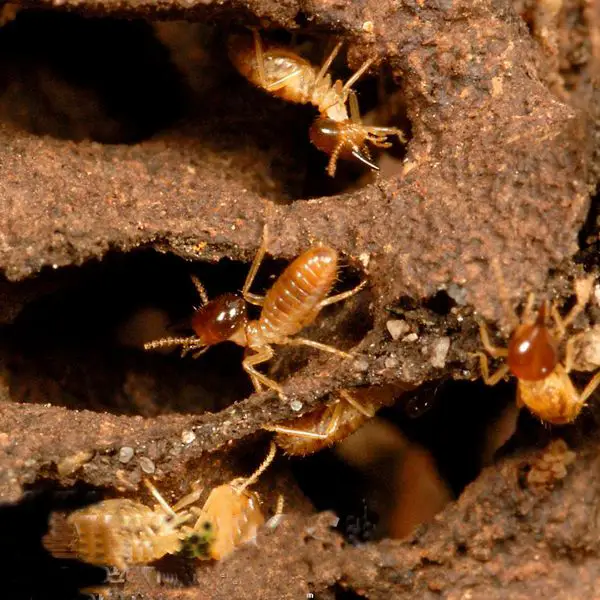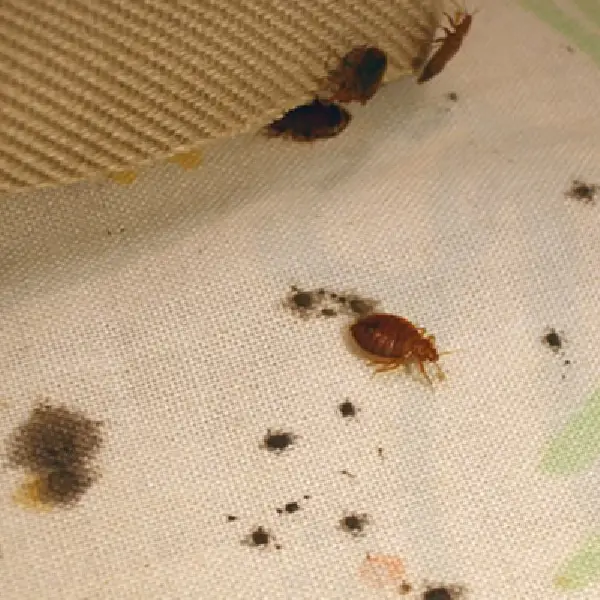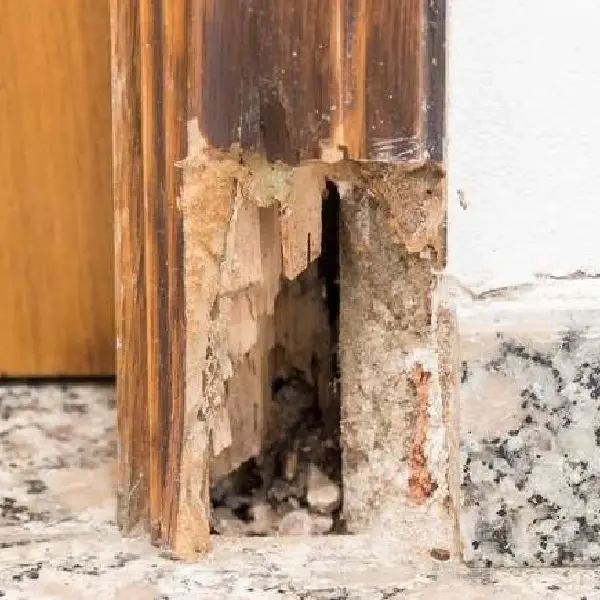Pest Inspection: The Total Guide

Pest inspection is one of many aspects of home inspections. Pests frequently invade our homes to seek refuge throughout the winter.
As a result, our properties may sustain small to serious damage. Pests can include everything from insects to termites, rodents, and skunks.
A pest home inspection consists of three parts: exterior inspection, inside inspection, and assessment and suggestions for pest treatment.
Here's what to anticipate when having a home and pest inspection done in your house.
What is a Pest Inspection?
A pest inspection is when a qualified specialist comes out to carefully investigate a property for any creatures that might cause harm to the building or the people who live there.
During an inspection, the inspector will go over the inside and outside of your house checking for signs of pests, wood deterioration, and other concerns.
A pest inspection should not be mistaken for a house inspection, which examines a property's major structures and characteristics.
Rather, a pest inspection concentrates only on locating any unwelcome organisms that may be hiding in crawl spaces, basements, attics, garages, and house access points.
Signs of Pest Activity
In other circumstances, there are clear symptoms of a pest problem. For example, if you notice a rat running across the floor or termites crawling all over your basement's wooden beams, you know a problem must be fixed. But it isn't always evident.

image sourced from here
You may hear strange noises in the middle of the night or discover unexplainable damage to your baseboards.
Perhaps there's a strange odor in your pantry that you can't identify. If you have a pest problem in your house, you need to figure out what's going on before it gets worse.
Here are some unusual indicators that might suggest a pest infestation that you should not overlook.
Droppings
One of the clearest indicators that unwelcome pests are present in your house is the presence of little droppings.

image sourced from here
However, occasionally these excretions aren't as noticeable as you may imagine. You could think the droppings are just lumps of dirt, depending on the kind of infestation and how old they are.
Additionally, they may fragment over time into smaller granules, which would make them much more difficult to distinguish.
Accumulation of grime and grease
Many pests, such as rats, mice, and some insects, have a tendency to migrate within enclosed spaces along well-known paths.
This frequently leaves an oily or sticky residue in its wake. Rats, for instance, frequently skitter over walls, leaving behind black grease streaks.
Additionally, brown stains have been seen left by cockroaches on walls and other surfaces, particularly in kitchens and toilets.
Strange noises or smells
Experts are usually able to distinguish the distinct odors that pests may release. But you might not know what to smell for if you've never dealt with a bug issue before.
Rats are reputed to smell like ammonia, whereas mice typically leave behind a musty, urine-like stench.
Experts claim that bed bugs may have a musty or pleasant fragrance, whereas cockroaches often have an oily odor.
Sounds like nibbling, clawing, squeaking, or running suggest you could have a rodent or mouse problem.
When all other sounds are removed, large bugs can occasionally be heard. They often have a mild buzzing or white noise sound to them.
Ruined furniture and textiles
It's possible that bugs are causing damage to fabrics if you observe them growing holes or rips that don't make sense.
Due to their attraction to soft surfaces, several tiny bugs will do obvious damage to rugs, couches, clothes, and other items.
Termites, carpenter ants, and other pests may be the cause of any scratches or loose shavings that they may have.
Indicators that a nest is being built
If you examine closely, you might be able to detect traces of the nests made by mice, rats, and other rodents, who are known to construct their nests out of whatever is available to them.
Use a flashlight to look through your home's tiny, obscure crevices. Rodents and mice frequently nest in the following areas:
- Behind laundry or kitchen appliances
- Within cabinets and drawers
- Behind couches and other large furniture pieces in barns and sheds
- Other tiny, obscure, and gloomy places
Woodpeckers on your land
Although having birds fly over your yard is typically pleasant, if you notice that there are more woodpeckers than normal, it may indicate an infestation.
Since woodpeckers feed on insects, if your house is a popular destination for six-legged animals, hungry birds will begin to congregate there in search of easy access.
Gnaw signs
Although more commonly associated with bugs are holes in the wall, many homeowners neglect to check for signs of chewing or gnawing pests.
Watch out for chewed-up baseboards, electrical cables, upholstery, window sills, cardboard boxes, old newspapers or magazines, and even drywall since rats will nibble on almost anything that is available to them.
It's also known that bigger pests like squirrels and raccoons may gnaw through wood and other materials.
Footprints in carpets or outside spaces
Some pests are so minute that they leave very little trace of their presence, while others might leave behind small meal fragments, grease stains, footprints, or a trail of droppings.
It's crucial to wait to wipe up any footprints, pieces, or grease trails until you've followed them to determine where the pests may be entering and leaving the area.
Do you need more information about the signs of pest activity? If so, click here.
How to Prepare for a Pest Inspection?
If you want to give your house inspected for a pest inspection for a home purchase or sale, here is what you should get ready for.
Large and Heavy Appliances should be Taken Down from the Wall
You will need to relocate some furnishings and appliances for cleaning if you discover no issues with them.
Take everything out of your living area and give any apparent dust a good vacuum.
Keep the primary items spaced at least three or four feet from the wall after cleaning to allow your professional to check for any evidence of recent activity.
Remember the Closets
Pests may be drawn to clothing, shoes, and other goods kept in closets. Make sure you empty your closet completely and vacuum or sweep the shelves and floor.
Throughout the winter, keep any off-season apparel in plastic containers with tight-fitting lids.
A nice, cozy house is the epitome of what pests prefer, so make sure yours is prepared for an examination by a pest control professional!
Make Your House Clean and Declutter-Free
In addition to being less appealing to pests, a clean home will be simpler to check. Thus, before the inspection, give your house a thorough tidying.
Remember to wash and vacuum all of your curtains and linens. Lastly, fill up all of your garbage cans with fresh liner bags after emptying them.
Take Everything Edible Out of Your Kitchen
Taking out every food item from your kitchen before a pest control specialist visits is another step in preparing your house for a pest control examination.
That covers food for humans as well as pets. Perishables like meat and fish should be refrigerated, and food should be kept in sealed containers.
Additionally, you must take off of your counters any small equipment, such as microwaves, coffee machines, and toasters.
After everything has been put away, wash the surfaces in your kitchen. Remember to clean the interiors of your appliances, drawers, and cabinets.
What Do Pest Inspectors Do?
Due to the need to check for region-specific dangers, the items that inspectors look for during a pest inspection will differ significantly based on the location of a home.
An examination carried out in the Southwest, for instance, would probably look for scorpions, but one in the Midwest may not.
If you are wondering in a pest inspection what do they look for, your answer is here:
Inspectors will be vigilant for any indication of wood-destroying insects including termites, beetles, carpenter ants, and carpenter bees, regardless of the location.
Additionally, they will look for typical pests including moths, bed bugs, cockroaches, and rats.
In addition, the inspector will search for indications of structural damage to the walls, baseboards, siding, floors, and other areas.
They could do this by utilizing specialized instruments like moisture meters, thermal imaging cameras, and other gadgets that identify problems that are invisible to the human eye.
A thorough pest examination should focus on all potential sites for the presence of critters, such as:
- Every space in the house
- Caves and the lower level
- Porches and decks
- Roof voids, garages, basements, and attics
- Outbuildings: sheds and the like
- Retaining walls and fences
- Floorboards, closets, cabinets, and door frames
The Pest Inspection Report
When determining the likelihood of a pest infestation and creating a pest control plan, the pest inspection report is a crucial resource.
It's critical to properly read the report and follow the inspector's suggestions.
These might include caulking any gaps or fractures, fixing leaks or drainage problems, disinfecting and cleaning contaminated areas, getting rid of infected items, cutting back overgrown vegetation, putting food in sealed containers, and employing a pest control company.
By following these guidelines, you may make sure that any current or future insect infestations receive the proper care.
Instructions for Treatment and Pest Damage Repair
It is possible to lessen the effect of pests on your home and prevent future issues by acting promptly and according to the best techniques for repairing pest damage.
1. Recognizing Insect Damage
It's crucial to distinguish between various pest species, though, as they can all result in different kinds of harm.

image sourced from here
For example, rats may nibble on insulation and cables, while termites may cause structural damage.
You may focus your pest management efforts on the distinct indicators and harm associated with each bug by being aware of them.
2. Determining the Degree of Damage
Determining the species involved, measuring the degree of devastation, and visually examining the area for indications of infestation are all included in assessing the extent of the damage.
This assessment is essential for creating a remediation strategy that works and making sure the restoration process takes care of everything that has to be taken care of.
3. Choosing the Repair Methods
One thing to think about is whether to use a do-it-yourself method or pay for expert repair services.
There are times when doing things yourself might save costs and be more doable. Homeowners might choose to forego hiring a laborer and fix minor bug damage themselves.
Do-it-yourself tasks may be appropriate for smaller-scale damage and offer the chance to solve the problem right away.
Nonetheless, determining the degree of damage and the difficulty of the required repairs is crucial.
Large-scale pest damage may usually be handled by professional repair services since they have the knowledge and tools needed.
4. Supplies for Fixing Damage
Find the finest supplies for repairing pest damage and receive a thorough guide to help you restore the integrity of your property.
Put your trust in the professionals to offer you practical solutions for a smooth restoration procedure.
Pest Inspection Cost
Depending on the type, organization, and region, the typical cost of a pest inspection ranges from $50 to $200.
For homeowners who are not purchasing or selling a property, several pest inspectors provide discounted or free inspections.
FAQs about the Pest Inspection
When Do You Need A Pest Inspection?
When purchasing or selling a home, a pest inspection is usually required to find any existing damage or pest infestations that can lower the property value. Regular pest inspections are also advised as a preventative step to identify any problems early on.
How Long Does A Pest Inspection Take?
An hour or so is typically needed to finish most pest checks. But, the real length can be more based on the things the inspector has to check for as well as the house's dimensions and design. For instance, it can take longer if you have an attic or crawlspace that is more difficult to reach.
Who pays for a pest inspection?
In most house sales, the buyer is responsible for covering the cost of the pest inspection.
Conclusion
As you noticed, a pest home inspection is one of the most important things you should get done before purchasing, or, selling a house.
If you have no idea what a home and pest inspection is and what are the steps, this blog post is for you.
In this blog post, we explained the preparation steps for a pest inspection, the instructions for treatment, and many useful tips on this subject.
- In this post:
- What is a Pest Inspection?
- Signs of Pest Activity
- How to Prepare for a Pest Inspection?
- What Do Pest Inspectors Do?
- The Pest Inspection Report
- Instructions for Treatment and Pest Damage Repair
- Pest Inspection Cost
- FAQs about the Pest Inspection
- Conclusion



